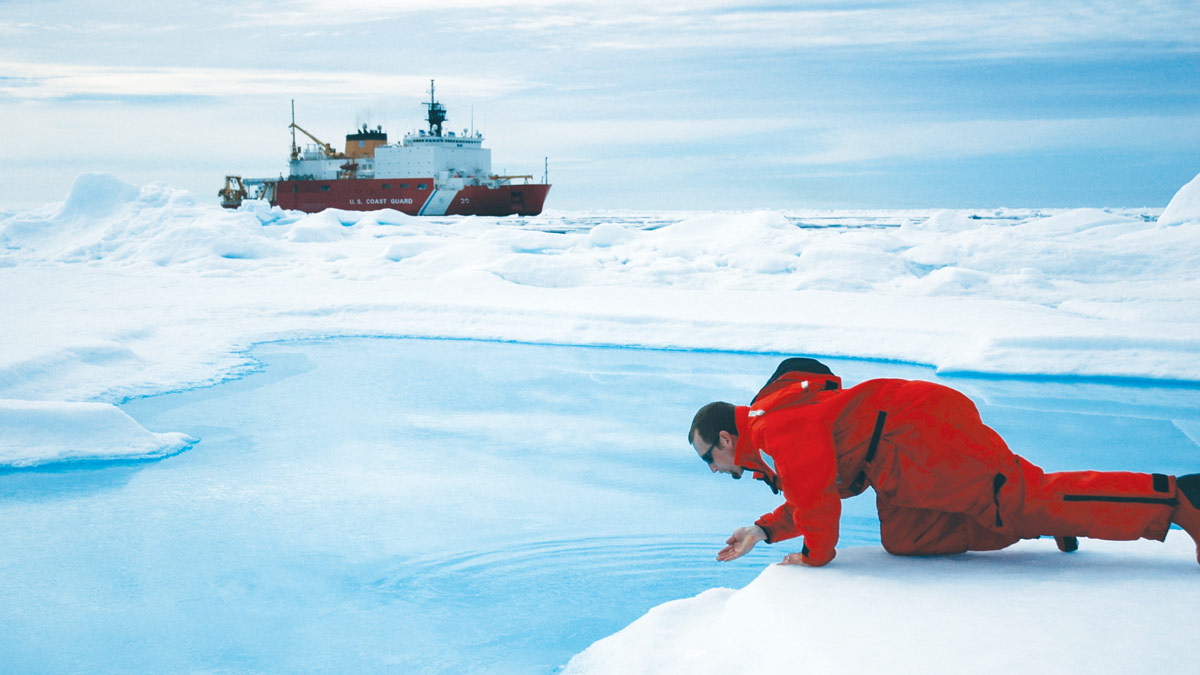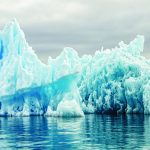The Central Arctic Ocean (CAO), a vast, high-seas expanse spanning 1.1 million square miles historically protected by year-round sea ice, has remained largely untouched by human industry.
But this sanctuary is now under siege from climate change and intensifying economic development pressure. As summer sea ice shrinks at unprecedented rates, new shipping routes and resource and geopolitical claims are converging in a fragile and largely unregulated ocean.
Today, the Arctic is warming four times faster than the global average. The alarming consequences include a 65% reduction in average September sea ice since 1980. “The Arctic is in the midst of rapid change, and we’re seeing that reflected in profound environmental and ecological shifts,” says Dr. Julienne Stroeve, senior scientist at the US National Snow and Ice Data Center. “What was once permanent ice is now open water in summer.”
This transformation has opened the door to ambitious industrial schemes, most notably the proposed Transpolar Sea Route – a direct shipping corridor across the Arctic. Proponents argue this route could reduce shipping time and costs between Asia and Europe. However, as the Arctic Council’s Protection of the Arctic Marine Environment working group notes, “Trans-Arctic shipping introduces risks of oil spills, black carbon emissions, underwater noise, and disruption to wildlife migration patterns.”
The threat is magnified by the CAO’s extreme remoteness. The region suffers from a severe lack of search and rescue capabilities, and any pollution incidents would be compounded by the lack of cleanup capability in such remote waters – meaning accidents in the CAO could have transboundary consequences, with ocean currents spreading contamination far beyond the Arctic.
Equally concerning is the looming possibility of deep-sea mining in the CAO. As Arctic coastal states submit overlapping claims for Extended Continental Shelf rights, competition for seabed resources intensifies every day. The International Seabed Authority wrapped up their 30th Session this July without either greenlighting deep-sea mining or stopping it with a moratorium (which 38 governments, including Canada’s, are calling for). Meanwhile, the US intends to offer its own permitting process for both its territorial waters and the high seas.
Deep-sea mining targets hydrothermal vents and other unique seafloor ecosystems – environments that are largely unexplored and potentially irreplaceable. “We’re talking about ecosystems that have evolved over millions of years in total darkness, under immense pressure, and are highly vulnerable to disturbance,” explains Dr. Diva Amon of the Deep Ocean Stewardship Initiative. “Once disturbed, they may never recover.”
What was once permanent ice is now open water in summer.
The ecological wealth of the CAO cannot be overstated. The CAO is “the world’s quietest sea,” offering migratory whales, seals, and seabirds a refuge from anthropogenic noise pollution that is increasingly rare elsewhere in the world’s oceans.
Beyond biodiversity, the Central Arctic Ocean plays a pivotal role in climate regulation. Arctic ice cools the planet by reflecting sunlight, and Arctic currents and atmospheric systems regulate global weather. Climate scientist Dr. Mark Serreze notes, “What happens in the Arctic doesn’t stay in the Arctic. The loss of sea ice is linked to more erratic jet streams and extreme weather events further south.”
Importantly, the Arctic is inhabited. Indigenous peoples have lived in the region for millennia, forging deep cultural and subsistence relationships with the marine environment. “The Central Arctic Ocean is integral to the food security, cultural identity, and governance practices of Arctic Indigenous communities,” emphasizes Dalee Sambo Dorough, former Chair of the Inuit Circumpolar Council. “Ignoring Indigenous knowledge in decision-making is both unjust and counterproductive.”
Some progress has been made. In 2018, the Central Arctic Ocean Fisheries Agreement – a landmark accord involving Arctic and non-Arctic nations – placed a moratorium on commercial fishing in the CAO and established a joint scientific research program. This agreement, built on the precautionary principle, is the first international accord to preemptively ban fishing in a high seas area before it starts.
Yet, more is needed. The US-based non-profit Ocean Conservancy is calling for a new international agreement tailored to the CAO’s current threats, one that not only bans deep-sea mining and transpolar shipping but also ensures inclusive governance and Indigenous representation. “The Arctic is becoming a new geopolitical frontier,” warns Dr. Klaus Dodds, Professor of Geopolitics at Royal Holloway, University of London. “We must resist the temptation to treat it as a commodity race, and instead treat it as a shared responsibility.”
Key pillars of this proposed agreement include:
- A moratorium on new extractive industries in the CAO.
- Codification of Indigenous knowledge and participation in governance.
- Funding for Arctic science and monitoring.
These efforts must be guided by a spirit of cooperation, not conflict. Safeguarding the Central Arctic Ocean is not only a matter of conservation but of global equity and justice. As United Nations Secretary-General António Guterres warned during the 2023 Climate Ambition Summit, “The melting Arctic is not just a local tragedy – it is a planetary crisis.”
Gordon Feller is a journalist, consultant, speaker, and Smithsonian Institution Global Fellow based in California.




